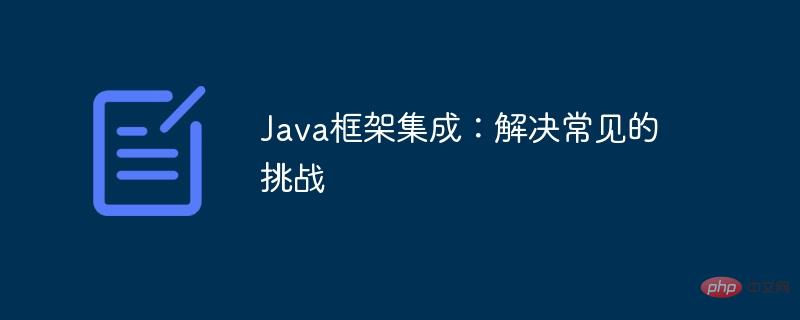
Common challenges faced by Java framework integration include: 1. Version compatibility; 2. Bean circular dependency; 3. Resource cleanup. The solutions are: 1. Use dependency management tools; 2. Avoid circular dependencies or use post-processors/libraries; 3. Use dependency injection frameworks/try-finally blocks/Resource cleanup. In the actual case, the integration of Spring Boot and Spring JPA solves these challenges through automatic configuration, automatic assembly and resource management.

Java Framework Integration: Addressing Common Challenges
In Java application development, integrating different frameworks is a common practice. Can improve efficiency and performance. However, this integration may present some challenges. This article explores common integration challenges and provides practical solutions.
Challenge 1: Version Compatibility
Different versions of the framework and dependencies may be incompatible, resulting in class conflicts and runtime errors.
Solution:
Challenge 2: Bean circular dependency
When two or more beans depend on each other, a circular dependency occurs, causing bean creation to fail.
Solution:
Challenge 3: Resource Cleanup
Framework components (such as Spring Beans) often own resources, such as database connections or file handles. Improper cleanup of these resources can lead to memory leaks and system instability.
Solution:
Practical Case: Spring Boot Spring JPA Integration
Consider the following example of a Spring Boot application:
import org.springframework.boot.SpringApplication;
import org.springframework.boot.autoconfigure.SpringBootApplication;
import org.springframework.beans.factory.annotation.Autowired;
import org.springframework.web.bind.annotation.RequestMapping;
import org.springframework.web.bind.annotation.RestController;
import javax.persistence.Entity;
import javax.persistence.GeneratedValue;
import javax.persistence.GenerationType;
import javax.persistence.Id;
import javax.persistence.Table;
@SpringBootApplication
public class Application { public static void main(String[] args) { SpringApplication.run(Application.class, args); } }
@Entity
@Table(name="users")
class User {
@Id
@GeneratedValue(strategy=GenerationType.IDENTITY)
private Long id;
private String name;
// 省略 getters/setters
}
@RestController
class UserController {
@Autowired
private UserRepository repo;
@RequestMapping("/")
public List<User> getUsers() { return repo.findAll(); }
}Using Spring Boot and Spring When integrating JPA, please note the following points:
The above is the detailed content of Java Framework Integration: Solving Common Challenges. For more information, please follow other related articles on the PHP Chinese website!